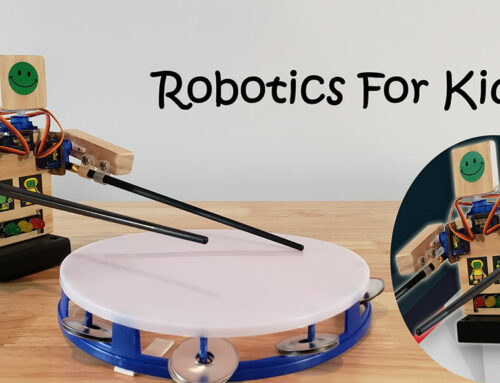By Paige Hawkins Mattke
STEM is the latest educational buzzword on the lips of teachers and parents everywhere. You hear it a lot, but what does it mean? Why is it significant now? What are the benefits of learning STEM for our children and for our country? And what do we as homeschooling families do to make sure our children get enough STEM in their education and that they benefit from having learned it?
Although the acronym STEM stands for Science, Technology, Engineering and Mathematics, it is much more than the sum of its parts. We’ve been learning these subjects for decades, but STEM combines them into an interdisciplinary approach of inquiry and problem-based learning applied to everyday situations. For example, learning how to create inexpensive energy-saving devices or designing new agricultural practices that save water and increase crop yield.
This integration is a revolutionary change in American education, and with it comes a different way of looking at the world.
Read ahead:
Benefits of STEM Education
STEM helps students develop critical thinking skills to solve real world problems, and helps them become lifelong learners with meaningful careers.
By learning to approach problems based on the scientific method, students gain valuable analytical and information management skills that can be applied to all areas of their education. STEM education is education about life, and it teaches students to think creatively and logically to solve complex problems.
With an emphasis on problem solving, inquiry and creativity, students have the chance to move from being simply consumers in our society to makers—people who invent and build things for the betterment of life. Furthermore, STEM is hands-on and applied, making it interesting and fun to learn.
Why is STEM Critical?
STEM education may be the single most important movement in the history of our country. Why? In a word: employment.
- “The future of the economy is in STEM. That’s where the jobs of tomorrow will be,” says James Brown, the executive director of the STEM Education Coalition in Washington, D.C.
- Some promising statistics for future STEM employment prospects: From 2000 to 2010, the growth in STEM jobs was three times greater than that of non-STEM jobs (2013 Federal Science, Technology, Engineering and Mathematics Education 5-Year Strategic Plan).
- In the coming years, STEM occupations will grow 1.7 times faster than non-STEM occupations (Department of Commerce).
- America will create 779,000 jobs between 2008 and 2018 that require a graduate degree in a STEM field (Georgetown University’s Center on Education and the Workforce).
- Employment in occupations related to STEM is projected to grow to more than 9 million between 2012 and 2022 (U.S. Bureau of Labor Statistics).
Based on these projections, the likelihood that our children will be working in some type of STEM field increases every year. As parents, we need to make sure they are prepared for the jobs of the future.
Jobs in STEM
The number of projected jobs is immense, with nearly 600,000 open jobs in manufacturing and 1.7 million in cloud computing. What other types of jobs will be available?
- Computing will make up nearly three quarters of all available STEM jobs
- Traditional engineering will make up nearly one fifth
- Physical sciences, life sciences, and mathematics will make up the rest.
These U.S. Bureau of Labor statistics don’t begin to reflect the types of jobs that combine STEM with other disciplines.
Although not all STEM jobs will require higher education or even a college degree, a four-year degree strongly impacts compensation.
As of May 2013, the average advertised starting salary for entry-level STEM jobs with a bachelor’s requirement was from $47,000 to $128,000—26 percent higher than jobs in non-STEM fields.
Overall, there are more than twice as many job postings for a bachelor’s degree recipient in STEM fields than in non-STEM fields. STEM education appears to be a sure path to high-paying employment.
What About STEM Jobs in Texas?
The outlook for STEM jobs in Texas is equally bright. Business is booming in Texas, specifically jobs sourced in STEM education.
According to an October 2011 state-by-state analysis:
- The Texas economy will need more than 715,000 STEM jobs by 2018, up from nearly 585,000 in 2008.
- STEM jobs will be five percent of all jobs in Texas in 2018, representing a 22 percent increase in STEM jobs.
- 14 percent of all jobs for master’s degree holders and 25 percent of all jobs for Ph.D. holders in Texas will be in a STEM field by 2018.
This means Texans can take advantage of STEM opportunities without leaving the state. These statistics mention nothing of the possibilities for STEM-related entrepreneurship in Texas, and the future looks bright for these new business as well.
National Initiative to Increase STEM Education
For the United States to maintain our competitive economic edge, we must continue to innovate. The key to this momentum is STEM education.
In order to assist industry in creating and using skilled American workers, the government is investing increasingly in STEM education initiatives. In 2015, President Obama articulated a clear priority, allotting $2.4 billion in STEM education for pre-kindergarten through graduate school.
Although this program is primarily geared towards public schools, many programs can be accessed by homeschoolers as well. The National Science Foundation and the Smithsonian Institution are two government entities that offer resources and guidance for
STEM education to the general public, much of which may be useful to homeschooling families.
Clearly, STEM is critical to our children’s education and future economic success. Without STEM skills, their employability drops. And isn’t this one of the main purposes of education: to raise employable, contributing members of society?
Age-Appropriate STEM Topics
Kindergarten to Grade 2
- 3D geometric shapes and spatial awareness
- Simple machines and gravity
- Basics of logic and block coding
- Weather and ecosystems
Grades 3 to 6
- Complex machines, energy
- Structural engineering basics
- Robotics engineering introduction
- Game design and strategy
- Concepts of aeronautics
- 3D printing
Grades 7 and 8
- Principles of design
- Rube Goldberg machines
- Renewable energy
- Geographic Information Systems (GIS)
- Building web-based apps
- Lasers and light
Grades 9 to 12
- Video production, Photoshop and advanced graphic design
- Advanced robotics engineering and competition
- Advanced structural engineering
- Coding mobile apps
- Complex CAD and 3D modeling/printing
STEM for Homeschooling Families
Homeschooling families should not feel left behind in the STEM movement. Although the task of educating our children in a field that didn’t exist for many of us when we were in school may seem daunting, there are more resources available than ever.
Educating our children in STEM subjects is a matter of determining where to begin and keeping in mind a few simple rules:
- STEM is all around us—in the courses we’re already teaching. We just need to fine-tune our attention to STEM.
- Are you doing a unit on categorizing native birds using a camera and computer? You’re doing STEM!
- Are you using a computer program to design bridges? You’re doing STEM!
- Are you teaching your first grader about simple machines by creating little ramps? You’re doing STEM!
Do a little research into what STEM is all about, and you will probably find that you’re already doing quite a bit of STEM.
- If you don’t have a computer, get one, and an Internet connection. It’s hard to do STEM without a computer, and the effort you put into learning about firewalls and protection preferences will be worth it when you see the nearly endless resources available for STEM education.
With some careful set-up, you and your student will be able to take advantage of the freedom of choice and control the Internet allows, without compromising safety.
- You don’t need to reinvent the wheel. There are vast STEM resources available on the Internet—from lesson plans to printables to interactive websites—and many of the resources are free. Plus, science-focused and other museums offer online STEM resources and on-site programs.
You can also visit local public or university libraries. Many STEM product companies offer curricula and lesson plans. Do your research to find suitable, high-quality, researched-based or data-driven STEM curricula and go from there. If it’s worked for other people, it will probably work for your family.
- STEM doesn’t have to be expensive. Although you could spend $1,200 on a state-of-the-art programmable drone for your sixth grader, they will learn the same, or maybe more, if you use a well-designed curriculum that teaches with paper airplanes.
Many effective and creative STEM curricula use everyday objects you can find in your home.
- Ask around for the best methods:
- Find out what other homeschoolers are doing.
- Join a co-op.
- Ask support group friends what works well for them and where they find their resources.
- Take advantage of out-of-school STEM activities. If you live in proximity to a city, odds are there is STEM-related activity happening.
These types of outlets offer many opportunities for students to experience STEM learning first hand:
- Makerspaces
- Local science or art museums
- High School science and robotics fairs
- STEM learning centers such as the Texas STEM Coalition
STEM education is the future, but it is also the past.
By combining disciplines that successful professionals excelled at during the last century and adapting them for life in this century, we give ourselves and our children the opportunity to continue to learn, innovate, create, invent and solve the problems that we will face in the future. STEM is something we should all look forward to learning.
Online STEM Resources for Homeschoolers
- PBS’s Design Squad has targeted resources to help parents understand and lead kids through the engineering design process.
- Under the Browse tab at TeachEngineering.org, access units, lessons, activities and labs for all grade levels.
- Engineergirl.org seeks to engage middle and high school girls just as they are statistically losing interest in math and science.
- Code.org gets early elementary students coding with Minecraft, Elsa from Frozen and Star Wars. Offerings include “unplugged” computer science lessons done without computers, helping students understand concepts. The site also offers parental tutorials.
- Find 28 Days of STEAM (the “A” is for “art”) as well as printables and some literature tie-ins at LeftBrainCraftBrain.com.
- Pinterest is a great resource for STEM ideas. Here’s an editor’s pick from a Pinterest search on “homeschool STEM activities”: 40+ STEM Websites for Grades 6-12.
- 25 Free and Low-Cost Coding Websites, Apps and Courses for Kids.
- 11 Best Sites for Free Online Computer Programming Courses
- 10 Computer Programming Jobs That Are in Demand Right Now
- 600 Free Online Programming & Computer Science Courses You Can Start in January
- FreeCodeCamp.org provides free coding lessons and experience. You work on real work solutions for non-profit agencies.
- GirlsWhoCode.org is geared to junior high and high-school-aged girls. The site pairs instruction and mentorship to “educate, inspire and equip” girls to pursue their engineering and tech dreams. They offer summer immersion programs.
- Learn to code in the car. Your kids can turn road trips and commutes to co-op and church into coding time with the free app SoloLearn. See the available courses at SoloLearn.com.
- Kids STEM Guide – Encouraging STEM Activities for K-12 & Beyond
Getting STEAM-y in the Kitchen
Exploring the Arts and Sciences through Cooking
By Stephanie Constantino
STEAM subjects (Science, Technology, Engineering, Art and Math) are slowly taking over the world (and our curriculum!). But, it’s not all math problems and worksheets. STEAM subjects are a great opportunity to let students get hands-on with their homework.
Science
Yeast is pretty amazing. It takes in sugar and exhales carbon dioxide, kind of like breathing. Those little bubbles of CO2 get caught in the dough, making it rise and get all fluffy and delicious. That’s why we let the dough rise: to give the yeast time to breathe!
Follow the recipe to create simple French bread rolls and notice how the carbon dioxide bubbles appear in the warm water!
Ingredients:
1 ½ cups warm water
1 tbsp active dry yeast
2 tbsp sugar
2 tbsp vegetable oil
1 tsp salt
3 ½-4 cups all-purpose flour
Instructions:
Mix the water, yeast and sugar in a bowl. Let it sit for 3-4 minutes until foamy.
Mix flour and salt in large bowl. Add vegetable oil and yeast mixture. Stir until it’s slightly sticky; pour onto floured surface. Knead for 8 minutes. Place in greased bowl and cover with a wet towel. Let rise for 1 hour.
Split dough into 12 pieces and roll into balls. Place rolls in a 9×13 inch greased pan, spaced evenly. Rise 1 hour.
Preheat oven to 400° F and bake for 15-18 minutes.
Technology
One piece of technology that just about every kitchen has is a thermometer. Help your student become familiar with this piece of technology by making caramel sauce!
Ingredients:
¾ cup white sugar
¼ cup water
½ cup heavy cream
1 ½ tbsp unsalted butter
Instructions:
Add sugar and water to saucepan. Stir until sugar dissolves and bring to boil. Stop stirring. However, monitor the temperature. Keep it between 320-335°F.
When it looks golden, add cream and butter. Stir and heat until desired texture is achieved. Pour over apples or enjoy as an ice cream topping.
Engineering
How much weight can a spaghetti noodle really hold? They’re awfully brittle, and yet, when combined, they can support a surprising amount of weight. Test out the noodles’ strength with this experiment.
Materials needed:
Uncooked spaghetti noodles
2 Styrofoam circles (1 in. diameter; 2 in. thick)
Instructions:
Begin with one foam circle and 1 noodle. Poke the noodle into the foam so it sticks straight up. Test how much weight it can support by placing a book on top. Very likely, it will snap.
Add 20 pieces of spaghetti in the same way. Test the strength again with a book. These will also probably snap fairly easily.
Now, poke 60-80 noodles into the foam circle. Place the second circle on top of the noodles. Finally, stack books on the top circle. Record your observations and create a theory about how the weak noodles supported so much weight.
Art
The next time you’re looking for an art project, look no further than your kitchen! Make cakes, cookies or cupcakes using your favorite recipes. Then, pass out the sprinkles and frosting! Use piping bags and different tips to make designs and textures; use food coloring to create a rainbow of possibilities!
Mathematics
There’s nothing quite like a cookie to brighten someone’s day. But, what if you don’t want to make several dozen at once? What if you just wanted one cookie?
Have your student choose their favorite cookie recipe from family recipe books or even online sources. Then, use division, ratios and unit conversions to figure out how much of each ingredient they’d need to make just one perfect cookie.
Test it out to check the answer!
***
Stephanie Constantino is a freelance curriculum developer and writing coach for Write from the Heart writing classes. She enjoys finding interesting, engaging ways to integrate learning and educational topics into the everyday world. She lives with her husband, who currently serves in the U.S. Army, along with her two children.
Practical STEM at Home and on the Go
Physics: In The Kitchen
Meal preparation is full of scientific richness. Melting points, expansion, acids and bases, compounds and the changing of base forms are all examples of cooking with science.
Try these fun kitchen experiments from Make and Takes with your children.
Physics: On the Road
If your children squeal with delight—or sometimes with fright—when you rush from one place to another, that is a perfect opportunity to discuss Newton’s Laws of Motion.
Newton’s Law #1 – An object at rest will remain at rest unless acted upon by an unbalanced force.
When the car stops, our bodies want to keep moving. When the car turns, we want to keep moving straight. An object in motion continues in motion with the same speed and in the same direction unless acted upon by an unbalanced force.
Newton’s Law #2 – Acceleration is produced when a force acts on a mass.
We fall back in our seat when starting the car again at a green light or stop sign. The greater the mass of the object being accelerated, the greater the amount of force needed to accelerate the object.
Newton’s Law #3 – For every action there is an equal and opposite reaction.
This is a great time to explain the third law in the context of driving safety. It will surely get the attention of your teenagers!
Physics: Playtime
Movement is in everything we do. Embrace this thought and take the kids outside. Simple activities such as tossing the ball, a foot or relay race, water balloon toss, or a game of frisbee golf are all reflections of the laws of physics.



